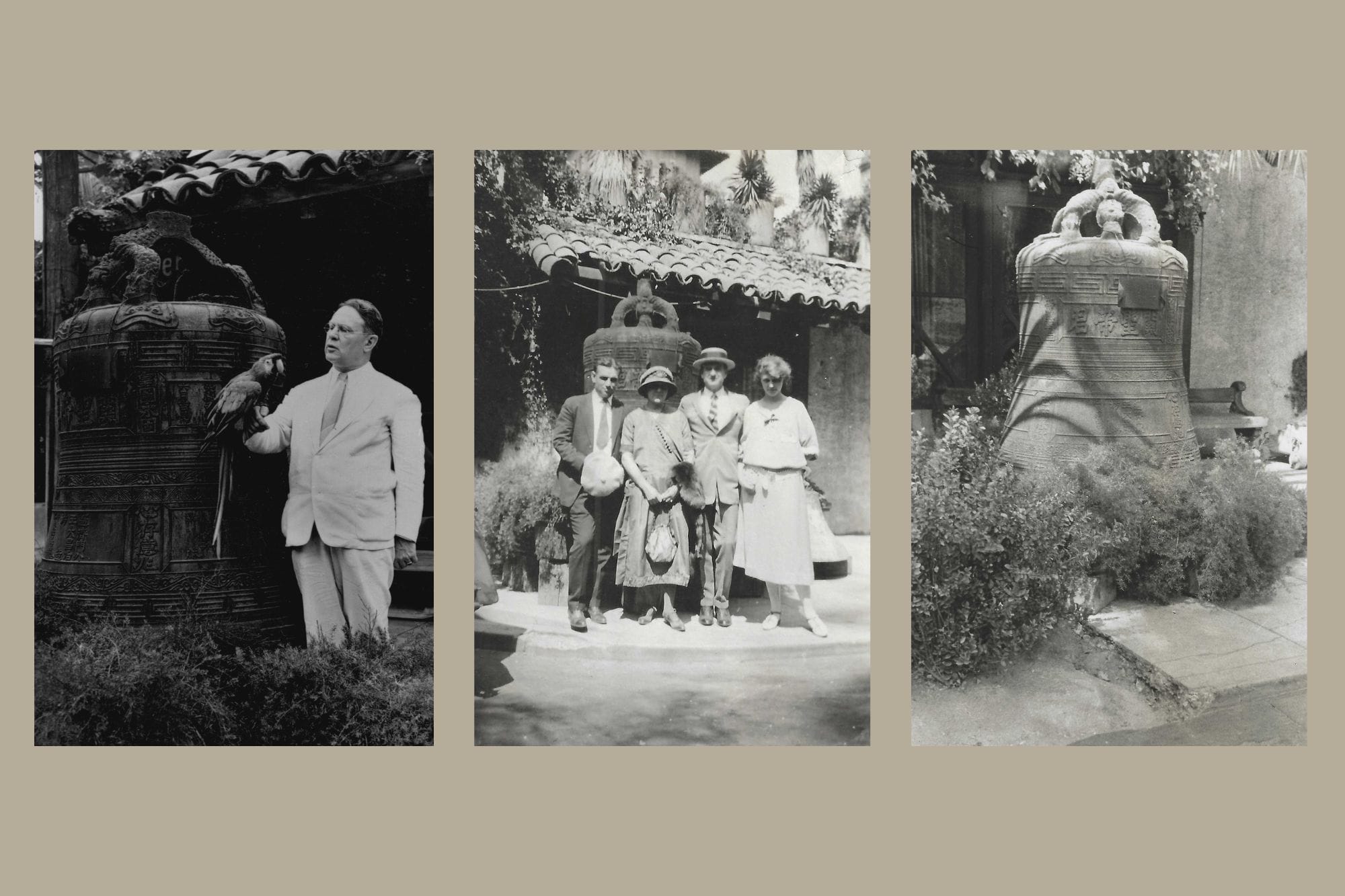Riverside's Historic Casa Blanca Neighborhood to Host 116th Cinco de Mayo Celebration
Annual cultural event returns April 26 to Villegas Park with entertainment, food, and family activities.
A 2,800-pound imperial relic's journey from Qing Dynasty ruins to Riverside's iconic hotel in 1913.

DeWitt and Allis Hutchings set sail from New York in June 1911 for a prolonged tour of Europe. A month later, Frank and Marion Miller joined Frank's daughter and son-in-law on their venture to explore the Continent. Miller was looking for treasures to fill his expanding Glenwood Mission Inn. After the Millers returned to Riverside, the Hutchings continued their world tour, extending their travels to Greece, India, China, and Japan. The world-traveling couple returned to June in March 1912, having been away from Riverside for ten months. Following the lead of Frank Miller, they brought back a vast collection of treasures, including 120 bells for the growing bell collection.
A year later, on March 26, 1913, the most significant and largest find from the Hutchings' trip arrived in Riverside. While spending a week in China, they discovered a magnificent bell in the ruins of a temple in Nanking, China. DeWitt and Allis proceeded to negotiate for the bell and bring it to Riverside.
The bell dates from the reign of Emperor Quang Hsu (also known as Guangzhou and Emperor Dezong of the Qing Dynasty). He ruled from 1875 until 1908, although his aunt controlled the power for most of that time. The Chinese Revolution of 1911–12 was a republican revolt that overthrew the Qing dynasty and established the Republic of China in 1912. During this conflict, the temple in Manchu, also known as the Tartar City, in the center of Nanking, was destroyed, and the bell was left in the ruins.
Upon the bell's arrival at the Mission Inn, it was placed in front of the Old Adobe.


The most fascinating story concerning the Nanking Bell and the Mission Inn occurred in 1915, when Louis Comfort Tiffany, an eccentric and cantankerous artist, stayed there. When eating in the California Dining Room, he had a screen set up around his table to shield him from other diners.
At the time of his departure, Louis Tiffany asked to see Frank Miller and inquired what price Miller would place on the Nanking Bell.
According to Miller biographer Maurice Hodgen, the exchange between the two became quite heated before Tiffany had his chauffeur drive off. A much better relationship was evident in 1923 when Frank and Marion Miller visited New York and were invited to Tiffany's home. At this time, Miller obtained the famous Tiffany windows, which were relocated to the Mission Inn's chapel and Galeria. But that is another story.

In 1948, the Old Adobe was torn down to build a large swimming pool in the Court of the Birds. The Nanking Bell was moved then and soon seen near the lily pond in front of the Campanario.

The Nanking Bell is number 272 in the vast collection that Frank and his family collected. The 1946 edition of The Bells & Crosses lists 748 bells. A 1950 newspaper article announces the arrival of bell #749. One estimate is that the collection grew to about 800 bells. A curio shop owner in England once said about Frank Miller, "Well, what does he want with all those bells? He's got the fiercest appetite for bells of a man I ever saw".
According to the 1946 edition of The Bells and Crosses of the Mission Inn, the inscription on the bell reads:
The Emperor of China appoints General Gai-yu to be Commander-in-chief of the Chiang-ning Division and Ye to be Adjutant-General. Dedicated to our ancestral God Quong Sie by his Imperial Army (Eighth Regiment) on a prosperous day in June in the Quang Hsu dynasty. Learning and militarism are more and more prominent. There is justice throughout heaven and earth. The emperor's purpose is steady and forever, and his heart is with the people. His wishes prosper. His desire (spring and autumn) is for budding and fulfillment. Over heaven and earth, loyalty hangs on the sun and moon.
The Nanking bell weighs between 1800 pounds (Riverside Daily Press, March 26, 1913) and two tons (1944 Mission Inn Handbook). The Bells & Crosses gives it weight as 2800 pounds. The bell is about seven feet tall, with a diameter at the bottom of four feet and four inches. In actuality, the Nanking bell is a gong. It definitely is the largest bell in the Mission Inn Collection.
The city's name, "southern capital" in Chinese, was originally given during the Ming Dynasty. It was changed from Nanking to Nanjing in the 1950s when a standardized Chinese word spelling system was developed, which was adopted internationally in the 1980s.
The Nanking Bell, or Nanjing Bell as it is now called, was moved to its present location along the front walkway in 2010. A crane lifted the bell onto an elevated platform under a tiled roof pergola. Check out this noteworthy bell the next time you are in downtown Riverside.

Let us email you Riverside's news and events every Sunday, Monday, Wednesday, and Friday morning. For free